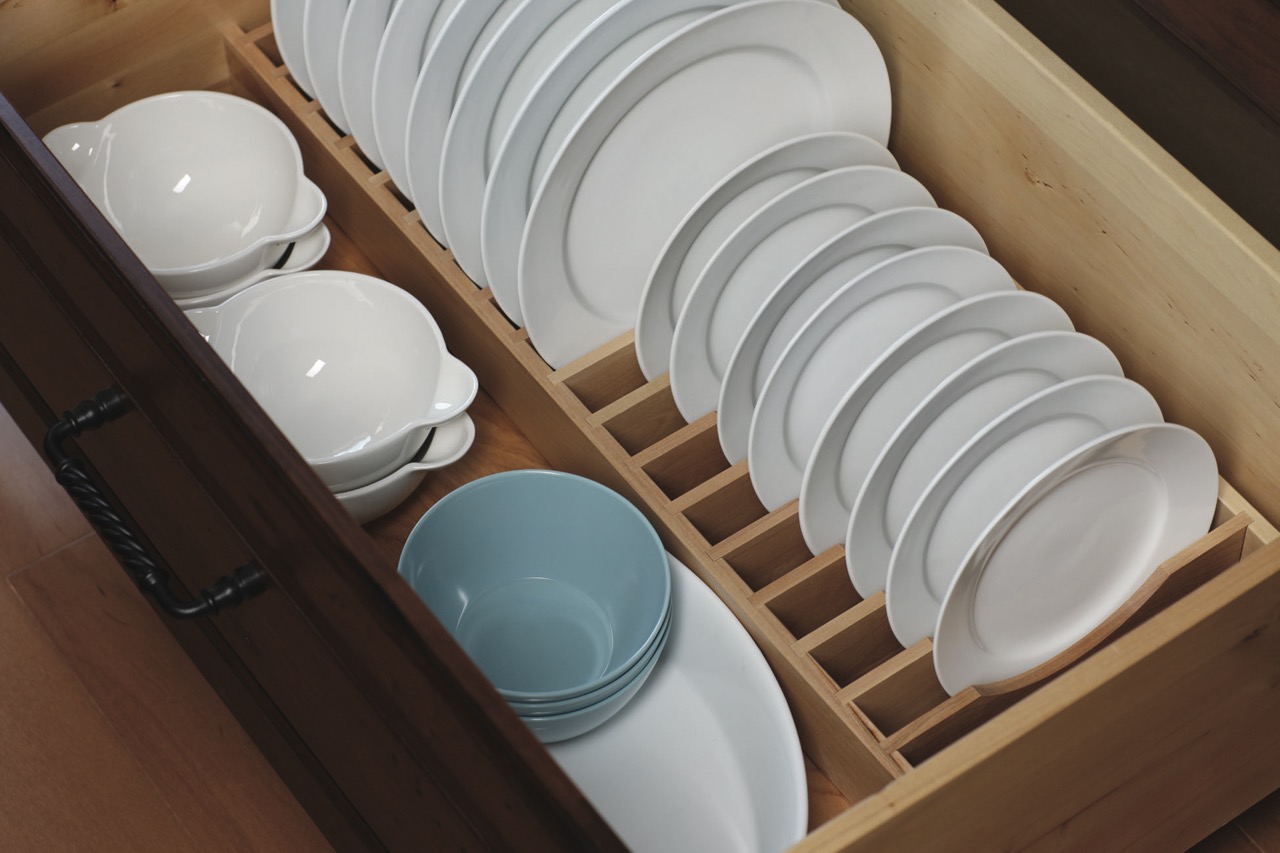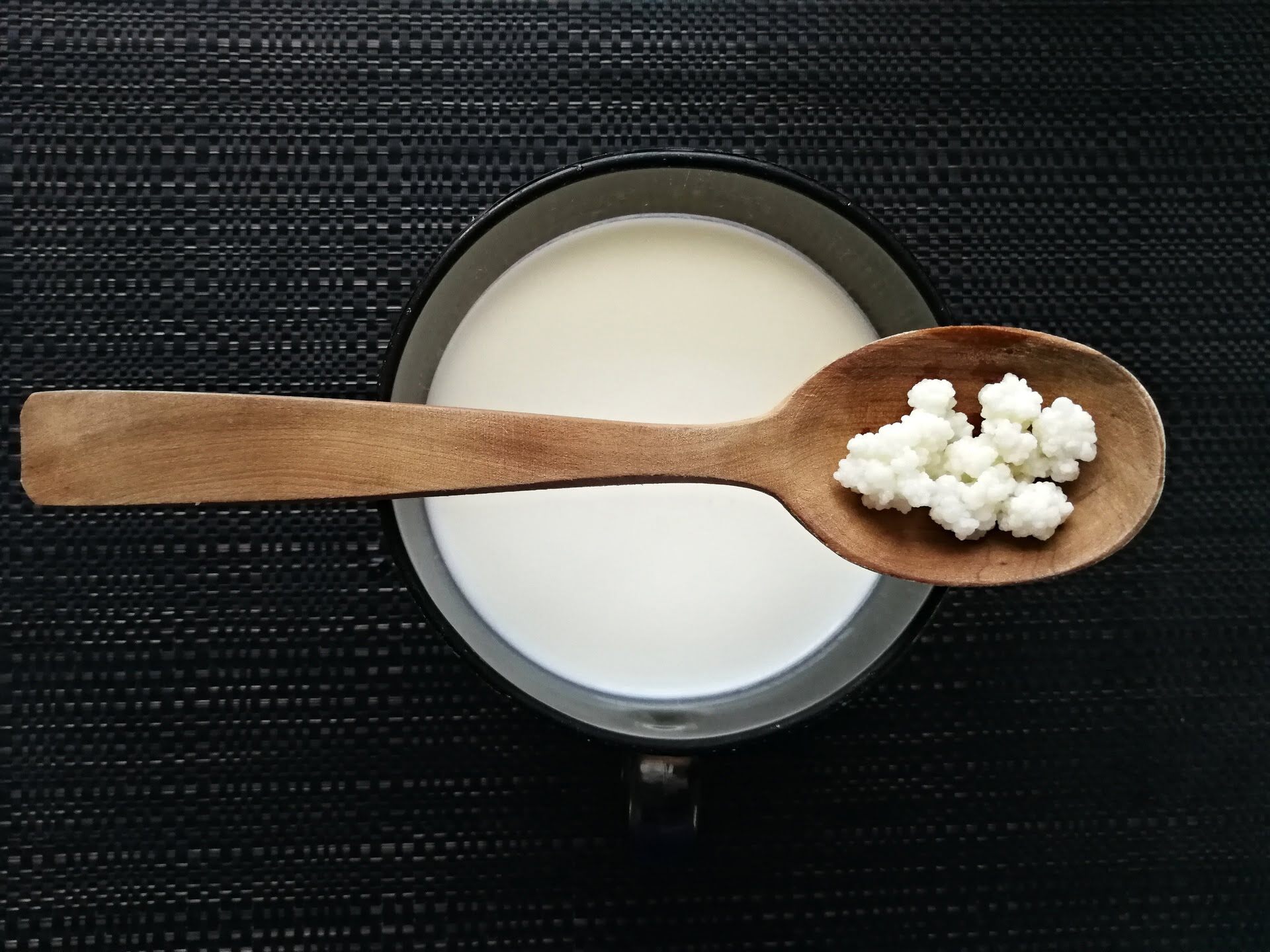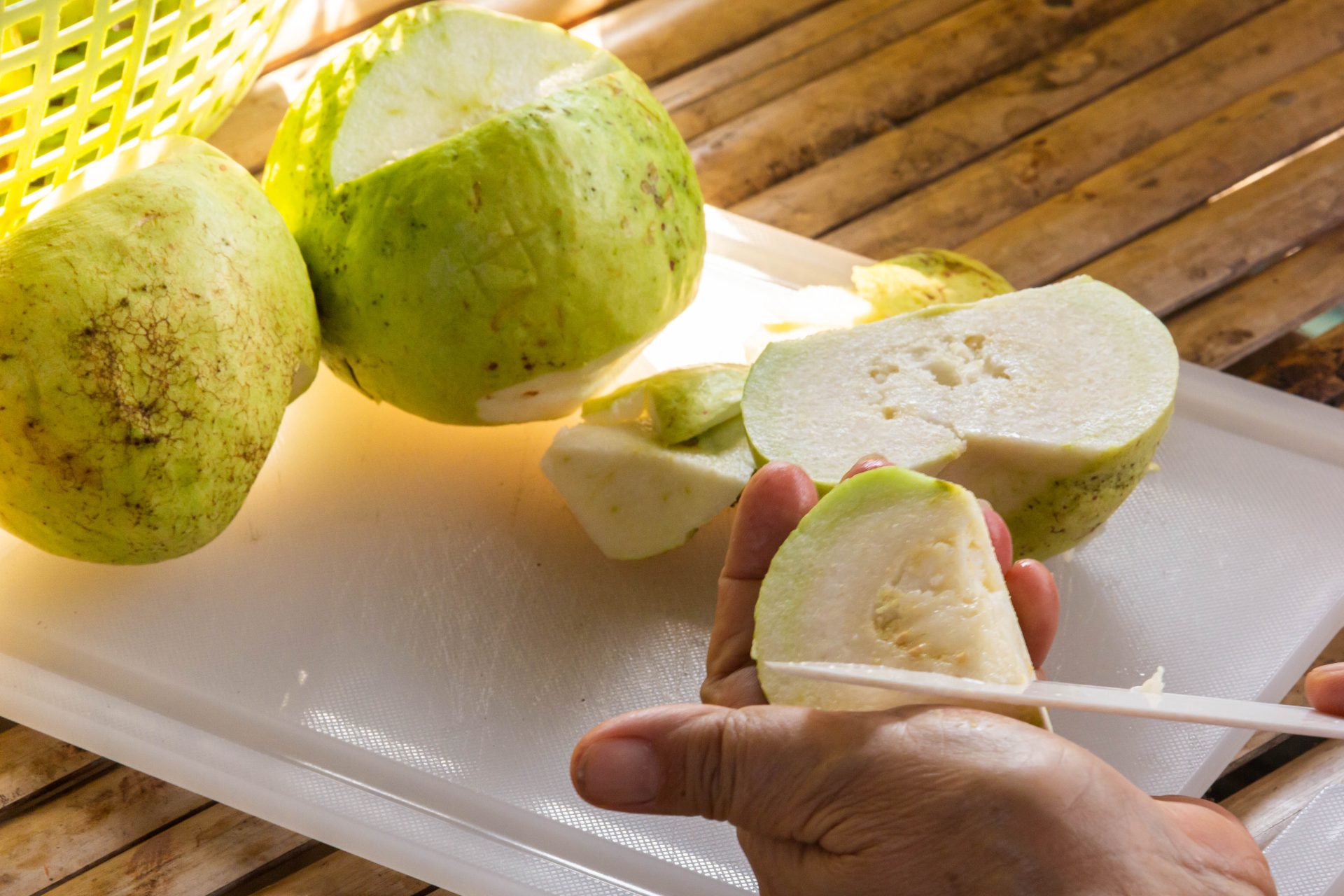

Articles
How To Store Tangerines
Modified: February 27, 2024
Discover the best way to store tangerines to maintain their freshness and flavor. Read our articles for helpful tips and tricks.
(Many of the links in this article redirect to a specific reviewed product. Your purchase of these products through affiliate links helps to generate commission for Storables.com, at no extra cost. Learn more)
Introduction
When it comes to enjoying the juicy sweetness and vibrant flavor of tangerines, proper storage is crucial. Whether you bought a batch of these citrus gems from the local market or harvested them from your own backyard, understanding the best methods for storing tangerines can help prolong their freshness and maintain their delicious taste.
Tangerines are a popular fruit known for their high vitamin C content and delightful taste. This small citrus fruit is often eaten as a snack, used in salads, or even juiced for a refreshing drink. However, their delicate nature and susceptibility to spoilage mean they require specific care when it comes to storage.
In this article, we will guide you through the process of storing tangerines to ensure you can enjoy their succulent goodness for as long as possible. From choosing ripe tangerines to exploring different storage methods, we will cover everything you need to know to keep your tangerines fresh and delicious.
Key Takeaways:
- Choose ripe, vibrant tangerines with a sweet fragrance, firm texture, and fresh stem end for optimal flavor and longer shelf life. Proper storage in a cool, dark place with adequate air circulation is crucial to maintain their juiciness and freshness.
- For short-term consumption, store tangerines at room temperature in a well-ventilated area, and for longer shelf life, refrigerate them in a designated drawer. Freezing tangerines allows for year-round enjoyment, while storing peeled segments in the refrigerator or freezer ensures convenient access to their juicy citrus flavor.
Read more: How To Plant Tangerine Seeds
Choosing ripe tangerines
Before learning how to store tangerines, it is essential to select ripe fruit. The following tips will help you choose the best tangerines:
- Color: Look for tangerines that have a bright, vibrant orange color. Avoid ones that are overly green or have dark spots, as these may indicate underripe or overripe fruit.
- Texture: Gently squeeze the tangerine to feel for firmness. It should yield slightly to gentle pressure but still have some resilience. Avoid tangerines that are too soft or have a wrinkled texture, as these may be overripe.
- Fragrance: Tangerines should have a sweet and citrusy aroma, indicating their ripeness. If there is no noticeable fragrance or if it smells fermented or moldy, it may not be the best choice.
- Size and weight: Tangerines that feel heavy for their size usually indicate a higher juice content, making them sweeter and more flavorful.
- Stem end: Check the stem end of the tangerine. It should be fresh and green, not dried out or moldy. A fresh stem end indicates freshness and proper storage.
By following these guidelines, you can ensure that you are selecting the ripest and freshest tangerines from the batch. Remember, ripe tangerines tend to have the best flavor and will have a longer shelf life when stored properly.
Proper storage conditions
Creating the ideal storage conditions for tangerines is essential for maintaining their freshness and flavor. Here are some key factors to consider:
- Temperature: Tangerines should be stored at a temperature between 45°F (7°C) and 55°F (13°C). This range provides a balance between slowing down the ripening process and preventing chilling injury.
- Humidity: Tangerines prefer a moderately humid environment. Aim for a humidity level between 85% and 90%. This helps prevent the fruit from drying out while reducing the risk of mold or decay.
- Air circulation: Adequate air circulation is crucial to prevent the build-up of ethylene gas, which can speed up the ripening process and cause the tangerines to spoil faster. Avoid storing tangerines in airtight containers.
- Light exposure: Tangerines should be stored in a cool, dark place away from direct sunlight. Exposure to light can cause the fruit to lose moisture and degrade in quality.
When considering where to store your tangerines, options such as a cool pantry or a cellar are ideal. If these options are not available, a ventilated cupboard or a basement can also work. It’s important to avoid storing tangerines near heat sources, such as stoves or ovens, as the heat can accelerate spoilage.
By creating the right storage conditions, you can extend the shelf life of your tangerines and ensure that they stay fresh and flavorful for a longer period of time.
Storing tangerines at room temperature
If you plan to consume your tangerines within a few days, storing them at room temperature can be a convenient option. Here are some tips for storing tangerines at room temperature:
- Basket or bowl: Place the tangerines in a shallow basket or bowl, allowing air to circulate around the fruit.
- Separate damaged fruit: If you notice any damaged or overripe tangerines, remove them from the batch to prevent the spoilage from spreading to the rest of the fruit.
- Check regularly: Keep an eye on your tangerines and inspect them regularly for any signs of spoilage or decay. Remove any affected ones promptly to prevent them from affecting the others.
It’s important to note that storing tangerines at room temperature will cause them to ripen faster. This is ideal if you enjoy ripe and juicy tangerines. However, if you want to prolong their shelf life, it’s recommended to consume them within a few days.
Keep in mind that room temperature storage is not suitable for long-term storage. If you have a larger quantity of tangerines or want to extend their freshness for longer, it’s best to consider alternative storage methods, such as refrigeration or freezing.
When storing tangerines at room temperature, remember to place them in a cool and well-ventilated area away from direct sunlight and heat sources. This will help maintain their quality and prevent premature spoilage.
Storing tangerines in the refrigerator
Refrigeration is an excellent option for extending the shelf life of tangerines. Here are some steps to follow when storing tangerines in the refrigerator:
- Choose a refrigerator drawer: Opt for a designated drawer or crisper compartment in your refrigerator to store your tangerines. These compartments provide the ideal conditions of cool temperature, moderate humidity, and ample air circulation.
- Avoid mixing with other fruits: Store tangerines separately from other fruits in the refrigerator. Fruits such as apples and bananas release ethylene gas, which can speed up the ripening process and cause the tangerines to spoil faster.
- Keep them unwashed: It’s best to store tangerines unwashed. Moisture can promote the growth of mold or cause the fruit to decay prematurely.
- Place in a breathable bag: If you prefer to keep your tangerines contained, use a breathable bag such as a paper bag or a mesh produce bag. This allows for air circulation while protecting the fruit from direct contact with the refrigerator’s surfaces.
When properly stored in the refrigerator, tangerines can maintain their freshness for up to two weeks. However, keep in mind that refrigeration can affect the texture of the fruit. The cold temperature may cause the tangerine peel to become slightly pitted or wrinkled, but the fruit inside should still be juicy and delicious.
Before consuming refrigerated tangerines, allow them to come to room temperature. This will help restore their natural juiciness and maximize their flavor.
Remember to regularly check the tangerines for any signs of spoilage, especially as they approach the end of their recommended storage time.
Store tangerines at room temperature for up to a week, or in the refrigerator for up to two weeks. Keep them in a ventilated container to prevent moisture buildup.
Read more: How To Plant A Tangerine Seed
Freezing tangerines for long-term storage
If you have an abundant supply of tangerines or want to preserve them for an extended period, freezing is an excellent option. Here’s how you can freeze tangerines for long-term storage:
- Peel and segment the tangerines: Start by removing the peel from the tangerines and separating them into individual segments. This will make it easier to use the frozen tangerines in various recipes or enjoy them as a frozen treat.
- Remove excess moisture: Pat the tangerine segments dry with a paper towel to remove any excess moisture. This will help prevent ice crystals from forming, which can affect the texture and flavor of the fruit.
- Arrange on a baking sheet: Lay the tangerine segments in a single layer on a baking sheet lined with parchment paper. Make sure they are not touching each other to prevent them from sticking together.
- Flash freeze: Place the baking sheet in the freezer and allow the tangerine segments to freeze for a couple of hours. This process, known as flash freezing, prevents them from clumping together.
- Transfer to a freezer bag or container: Once the tangerine segments are partially frozen, transfer them to a freezer bag or airtight container. Label the bag or container with the date of freezing, so you can keep track of their freshness.
- Remove excess air: Squeeze out any excess air from the freezer bag or container before sealing it tightly. This helps prevent freezer burn and extends the shelf life of the frozen tangerines.
- Store in the freezer: Place the freezer bag or container in the freezer and store them for up to 12 months. Tangerines can remain safe to eat beyond this timeframe, but the quality may degrade over time.
Frozen tangerines are perfect for adding a burst of citrus flavor to smoothies, desserts, or even as a refreshing snack on a hot day. When using frozen tangerines, thaw them in the refrigerator or at room temperature before consuming for the best texture and taste.
Remember to keep frozen tangerines separate from other strong-smelling foods in the freezer to avoid any flavor transfer.
Freezing tangerines allows you to enjoy the taste of tangerines all year round and make the most of their vibrant flavor even when they are out of season.
Storing peeled tangerine segments
If you prefer to enjoy peeled tangerine segments for quick and easy snacking, it’s important to know how to store them properly to maintain their freshness. Here are some tips for storing peeled tangerine segments:
- Dry the segments: After peeling the tangerines and separating them into segments, gently pat them dry with a paper towel. Removing excess moisture helps prevent them from becoming soggy and maintains their texture.
- Use an airtight container: Place the peeled tangerine segments in an airtight container. This helps to preserve their moisture and prevent them from drying out.
- Refrigerate for short-term storage: If you plan to consume the peeled tangerine segments within a few days, store them in the refrigerator. The cool temperature will help maintain their freshness and prevent spoilage.
- Freeze for long-term storage: To extend the shelf life of the peeled tangerine segments, you can also freeze them. Follow the steps mentioned earlier for freezing tangerines, placing the peeled segments on a baking sheet to flash freeze before transferring them to a freezer bag or container.
When it comes to using the stored peeled tangerine segments, you can enjoy them straight from the refrigerator, add them to salads, use them in desserts, or blend them into refreshing citrus smoothies.
Remember to thaw the frozen peeled tangerine segments in the refrigerator before using them. Thawed segments may be slightly softer compared to fresh ones, but their flavor remains intact.
Regardless of whether you are storing peeled tangerine segments in the refrigerator or freezer, always label the container or bag with the date of storage to keep track of their freshness.
By following these storage tips, you can have convenient access to peeled tangerine segments whenever you crave that burst of juicy citrus flavor.
Tips for storing tangerines
To ensure optimal storage and preserve the flavor and freshness of your tangerines, consider the following tips:
- Inspect before storage: Before storing tangerines, carefully inspect them for any signs of damage, mold, or spoilage. Remove any affected fruits to prevent them from affecting the rest.
- Avoid washing before storage: Do not wash tangerines before storing them. Moisture can promote the growth of mold and cause the fruit to decay more quickly.
- Handle with care: Tangerines are delicate fruits, so handle them gently to avoid bruising or damaging the peel. Rough handling can accelerate spoilage.
- Avoid overcrowding: Whether stored at room temperature, in the refrigerator, or in the freezer, make sure not to overcrowd the tangerines. Give them enough space for air circulation to promote freshness and prevent squishing.
- Rotate stock: If you have multiple batches of tangerines, rotate the stock to ensure that older ones are used before newer ones. This helps to avoid wastage and prevents the older fruit from spoiling and affecting the overall quality of the batch.
- Store in the right place: Keep tangerines in a cool, dark place. Whether it’s in a cool pantry, refrigerator, or freezer, maintaining the appropriate storage temperature is crucial for preserving their freshness.
- Consume within recommended timeframes: While tangerines can be stored for a while, it’s best to consume them within the recommended timeframes. Fresh tangerines are at their peak flavor and quality, so try to enjoy them as soon as possible.
By following these storage tips, you can maximize the shelf life of your tangerines and ensure that they retain their delicious taste and freshness for as long as possible.
Conclusion
Proper storage of tangerines is essential for maintaining their juiciness, flavor, and overall quality. Whether you choose to store them at room temperature, in the refrigerator, or even freeze them for long-term storage, following the right techniques can help you enjoy these citrus delights for an extended period.
When selecting tangerines, opt for ripe fruit with a vibrant orange color, firmness, and a sweet fragrance. Choosing the right tangerines is the first step in ensuring a delightful eating experience.
Proper storage conditions are key to preserving the freshness of tangerines. They thrive in moderately cool temperatures, with a humidity level between 85% and 90%. Adequate air circulation and protection from direct sunlight are also critical factors to consider.
Storing tangerines at room temperature is suitable for short-term consumption within a few days. However, for longer storage, the refrigerator can help extend their shelf life for up to two weeks. Freezing tangerines is an ideal option for long-term storage, allowing you to enjoy their citrusy goodness even when they are out of season.
Remember to separate damaged fruit and check your stored tangerines regularly for any signs of spoilage. Properly stored tangerines can enhance your meals, snacks, and recipes throughout the year.
By utilizing the tips provided in this article, you can ensure that your tangerines stay fresh, juicy, and full of flavor. So go ahead, store your tangerines correctly, and savor their deliciousness whenever you crave a burst of citrus goodness!
Frequently Asked Questions about How To Store Tangerines
Was this page helpful?
At Storables.com, we guarantee accurate and reliable information. Our content, validated by Expert Board Contributors, is crafted following stringent Editorial Policies. We're committed to providing you with well-researched, expert-backed insights for all your informational needs.















0 thoughts on “How To Store Tangerines”